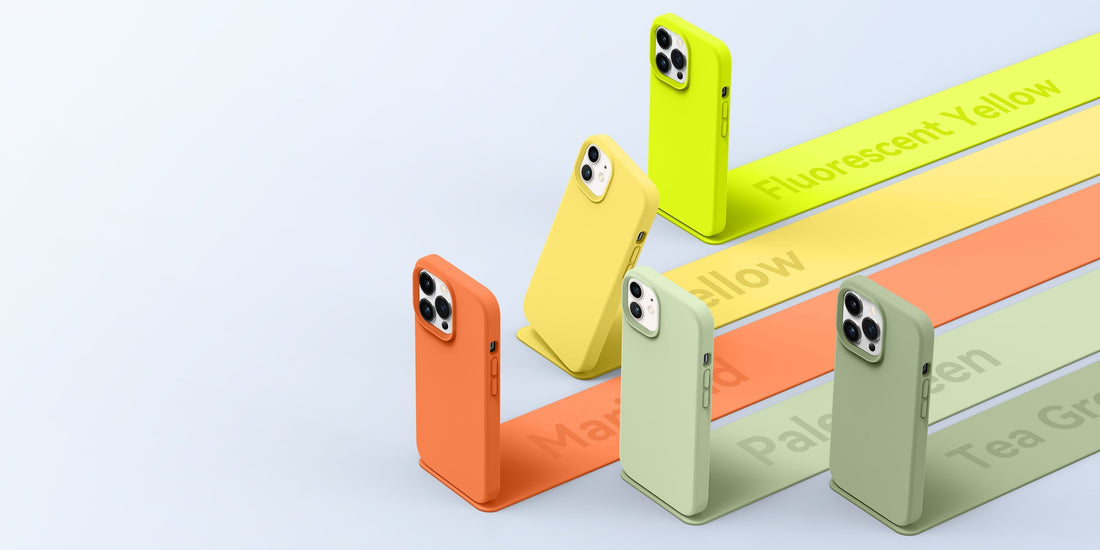
Aotesier Brand Story: Why We Focus on Eco-Friendly Liquid Silicone Cases?
Aotesier believe that sustainability is more than a trend—it’s a responsibility. With the rapid increase in smartphone usage, billions of phone cases are produced, used, and discarded each year, contributing to global plastic waste. We chose liquid silicone as our primary material because it offers the perfect balance between durability, aesthetics, and environmental impact. We will explore why Aotesier is dedicated to eco-friendly liquid silicone cases and what makes this material superior.
What Is Liquid Silicone?
- Definition and Characteristics: Liquid silicone rubber (LSR) is a highly pure, flexible material made from silicon-based polymers. It is created through a precise injection molding process, resulting in a smooth, durable, and soft-touch material.
- Common Applications: Besides phone cases, liquid silicone is used in medical-grade products, baby products (like pacifiers), and high-end industrial applications due to its biocompatibility and safety.
Liquid Silicone vs. Regular Silicone: Key Differences and Advantages
-
Manufacturing Process:
- Liquid silicone is injection-molded, ensuring a more uniform and high-precision finish.
- Regular silicone is compression-molded, often leading to inconsistencies in thickness and texture.
-
Texture & Comfort:
- Liquid silicone is ultra-soft, smooth, and resistant to fingerprints.
- Regular silicone can feel rougher and tends to attract dust.
-
Durability & Longevity:
- Liquid silicone is more resistant to wear, discoloration, and deformation over time.
- Regular silicone cases may harden or become brittle with prolonged use.
-
Eco-Friendliness:
- Liquid silicone is free from BPA, phthalates, and other harmful chemicals.
- Its longer lifespan means fewer replacements, reducing overall waste.
Why Choose a Liquid Silicone Phone Case?
- Superior Touch & Comfort: The ultra-soft, silky texture enhances the user experience.
- Shock Absorption & Protection: Provides better impact resistance than regular silicone or plastic cases.
- Easy to Clean & Maintain: Resistant to dust, dirt, and stains, making it effortless to keep clean.
- Long-Lasting Durability: Doesn’t degrade or become sticky over time.
The Eco-Friendly Philosophy Behind Liquid Silicone
- Biocompatibility & Non-Toxic Properties: Liquid silicone is safe for human use and doesn’t release harmful chemicals.
- Longer Lifespan = Less Waste: Its durability means fewer cases end up in landfills compared to plastic or cheap silicone cases.
-
Sustainable Production:
- Unlike plastic, liquid silicone doesn’t rely on petroleum-based raw materials.
- The manufacturing process produces minimal emissions and waste.
How to Identify Liquid Silicone vs. Regular Silicone?
- Texture & Feel: Liquid silicone is softer, smoother, and more resistant to dust.
- Flexibility & Durability: Liquid silicone retains its shape longer and doesn’t harden over time.
- Water & Stain Resistance: Unlike regular silicone, liquid silicone repels dirt and liquids.

Why Aotesier focuses on liquid silicone phone cases?
We aim to create cases that feel luxurious, protect devices effectively, and maintain their quality over time—eliminating the need for frequent replacements.
We believe that a small change -- like choosing a sustainable phone case -- can contribute to a larger environmental impact.
Aotesier’s Commitment to Sustainability
- Reducing Plastic Waste: By promoting durable, high-quality cases, we minimize the demand for disposable plastic alternatives.
- Eco-Friendly Packaging: We use recyclable packaging to further reduce our environmental footprint.
- Future Sustainability Goals: We are constantly exploring new materials and processes to enhance sustainability.
